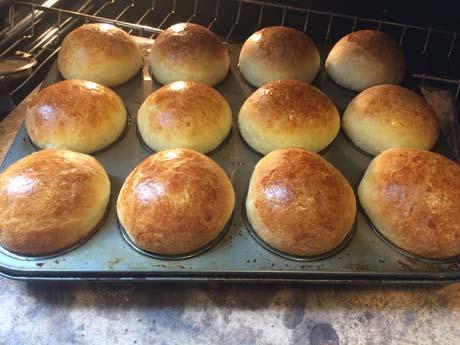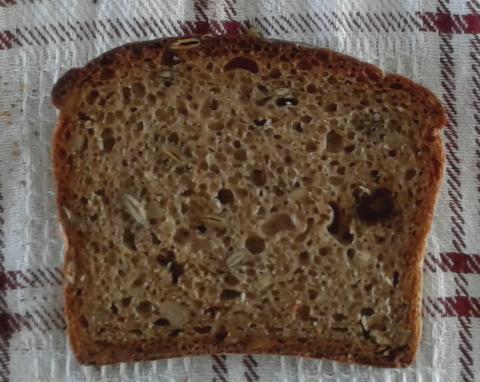
Pane Tipo di Altamura in a WFO: A mitigated disaster

This morning, I baked two loaves of Pane Tipo di Altamura (1kg each) and one loaf of my Pugliese Capriccioso (1 kg) in my friend J.S.'s Wood-Fired Oven. The breads were baked for a potluck lunch for about 25 most of whom are Italian-Americans.
Both breads were cold retarded in bannetons after final shaping for about 18 hours.
First, the bad news. We forgot an important lesson learned last year: You have to take the hot coals out of the oven before loading bread into it. Consequently, although the oven floor was a reasonable temperature for baking bread (around 500 dF), the heat from the fire resulted in a seriously charred crust. After the loaves cooled, I took a knife to them and scraped off most of the char. What was left still looked pretty nasty, but did not impart any bitter or otherwise off flavors to the bread.
The good news - and most of the news was good: First, I got the Altamura shaping right, finally. (Thanks to mwilson for his very helpful advice after my last bake of Pane di Altamura.) Second, there was terrific oven spring, and the final loaf shape was close to the classic folded Altamura shape. Third, (and most important) the bread was fabulously delicious! The flavor was more complex than any of my previous bakes, with nutty, sweet and tangy notes. The crust was crunchy. The crumb was cool, tender and chewy.
The bread was greatly appreciated by all, including the one attendee whose opinion I value most, a woman who immigrated from Apulia as a young adult. She and her husband had a very good Southern Italian restaurant and pizzeria in town until they retired some years ago.
So, here are some photos of the Pane di Altamura. The loaf is ugly as sin to look at. You will have to take my word that it was delicious to eat.


J.S. and I have already discussed our next bake in her WFO when we will remember to sweep out the coals before loading the bread. I also want to bake Pane di Altamura with an overnight retardation again in my oven. I think the retardation enhances this bread's flavor a lot.
By the way, the Pugliese Capriccioso was also (charred but) delicious.
David

















